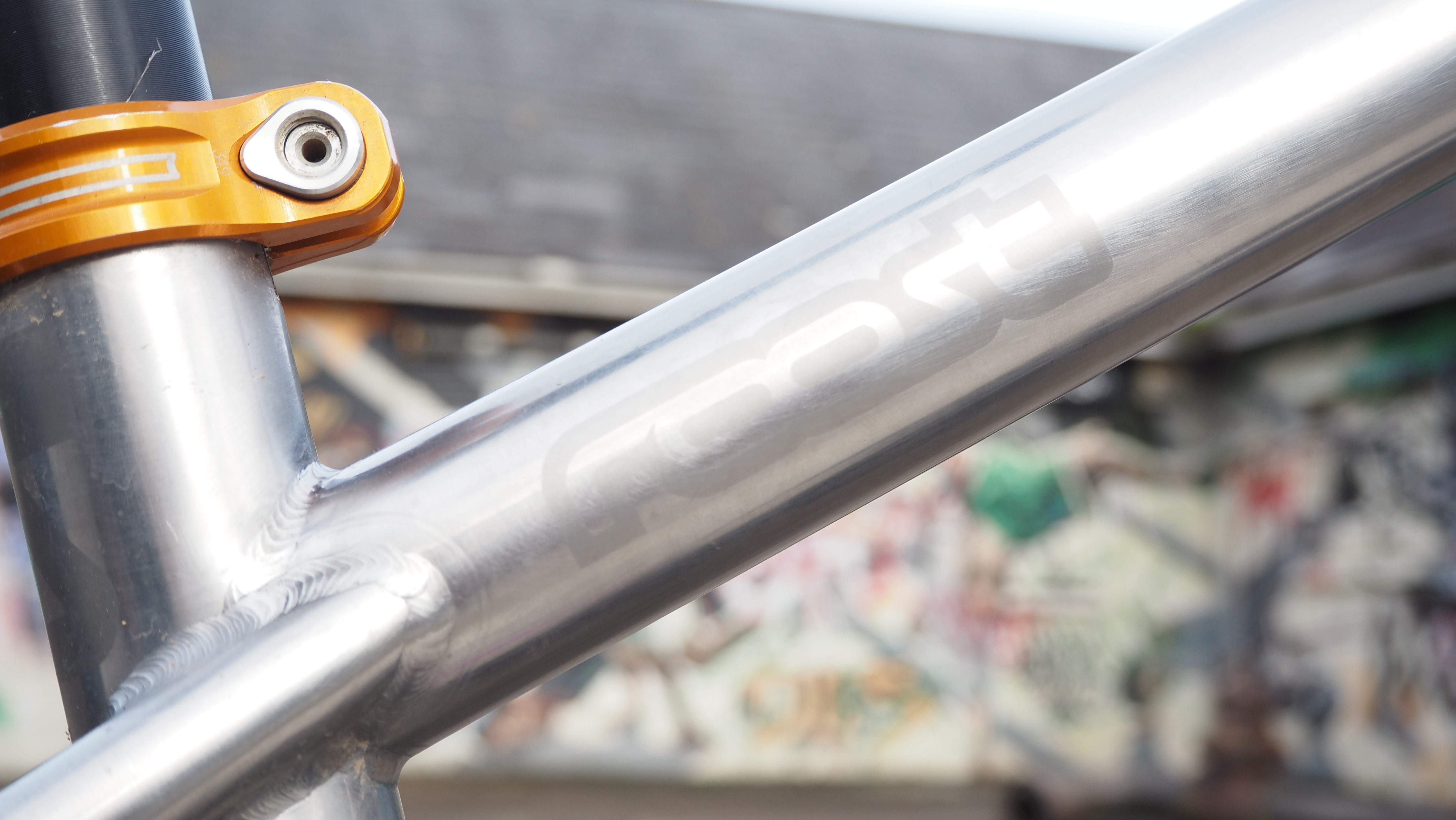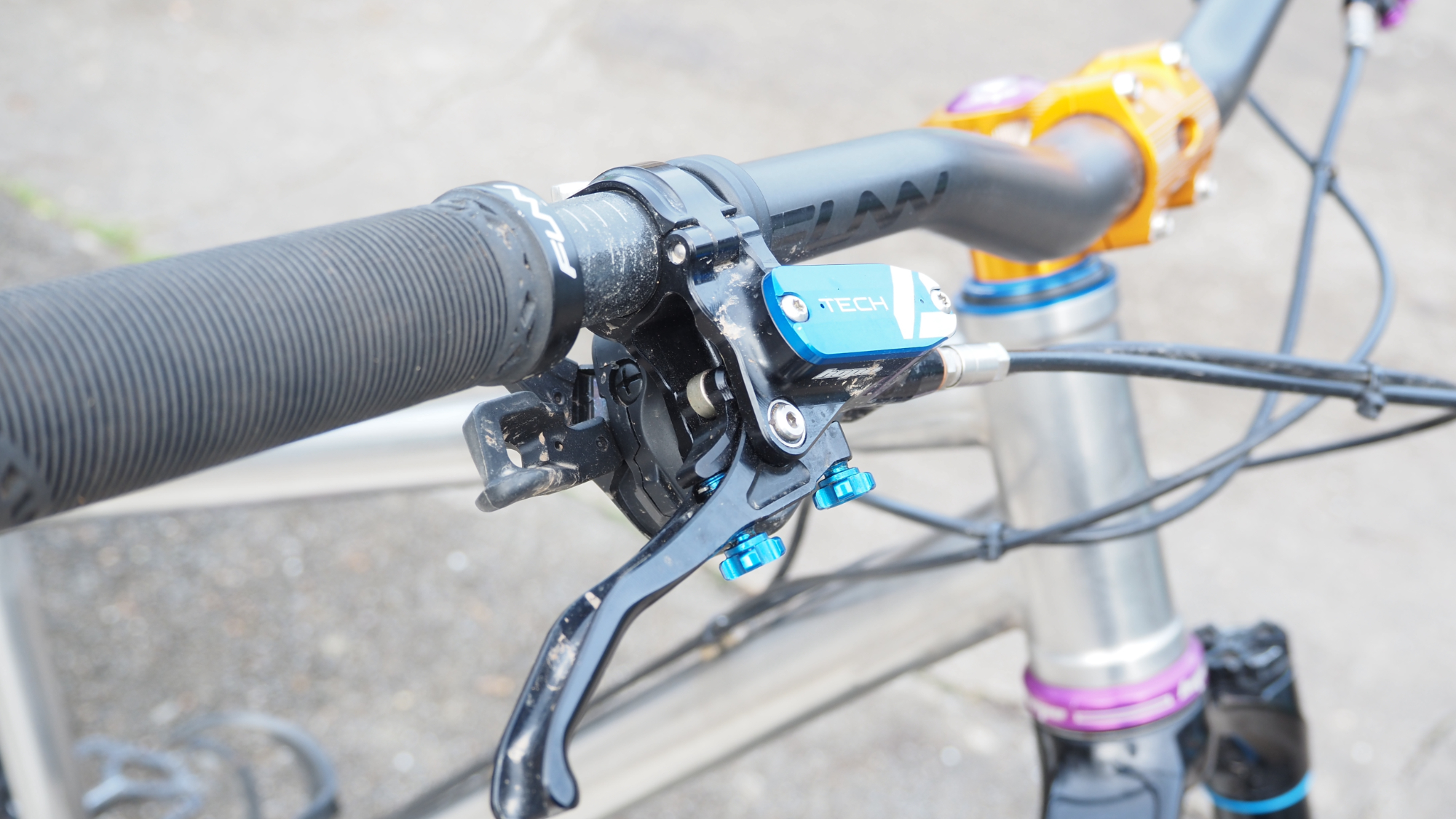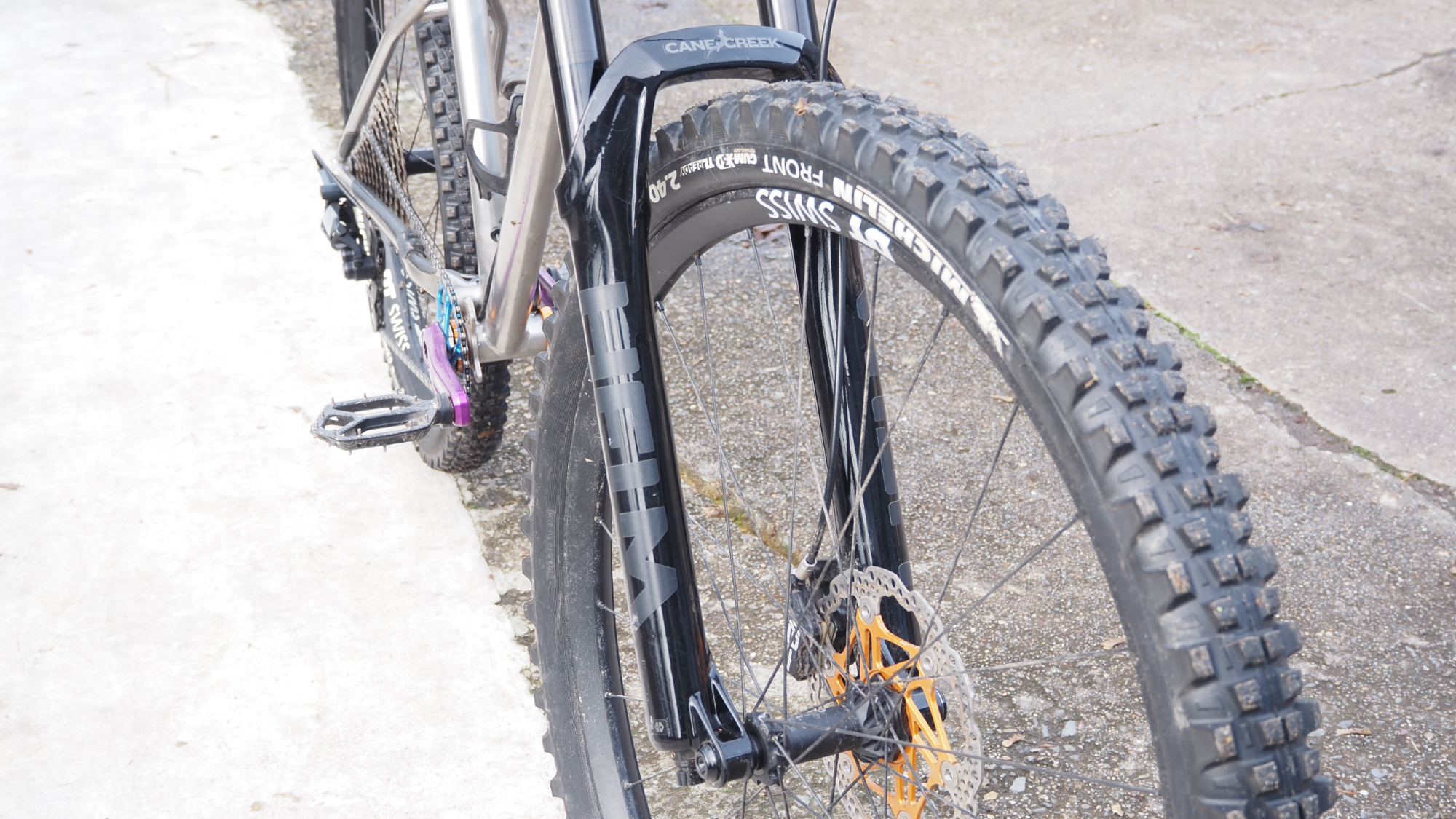Bike Perfect Verdict
Killer minimalist looks with a fantastic ride character that's versatile, playful and far more forgiving than you might think. It's not cheap or light though.
Pros
- +
Head-turning stainless steel frame
- +
Superb ride feel
- +
Confident handling
- +
Handmade frame
- +
Excellent component spec
Cons
- -
Only available in two sizes
- -
Premium price
- -
Not light in this build
Why trust BikePerfect
Starling Cycles is a UK-based bike brand based in Bristol, probably best known for its single pivot, steel full-suspension MTB, the Murmur. But founder Joe McEwan and his team also produce a number of other bikes, which include the Roost hardtail I've been testing over the winter.
In the UK, the Roost is available as frame only, a full custom build or the Hope Edition we're looking at here. Unfortunately, the Hope build is not distributed in the US, but other builds and the frame-only option are readily available. The bike looks properly stunning with its stainless steel frame (it was a dull day in a very dark and wet few weeks when we shot the Roost, so the photos don't do it justice), but does it ride as well as it catches the eye?

Design and geometry
The stainless steel frame with the tricked out colored Hope component choices make the Roost a proper looker. Pleasingly, the top tube resonates with a reverberating 'ching' like Tibetan meditation cymbals when you flick it with your finger nail – possibly a hint of the harmonious ride vibes to come.
The decal head badge and logos on the frame are very subtle so they don't detract from the raw stainless finish. The clean, metal lines are kept super simple with the only more complex section being the intricate chainstay yoke.
I measured the head tube angle at 65 degrees and the reach at 445mm – with a 150mm fork on my test bike. While Starling pitch the bike as "a ride-wherever, ride-whatever", those dimensions are in the trail hardtail ball park.
The Roost comes with a mixed wheel (mullet) setup of a 29-inch front and 2.75-inch rear. Tire clearance-wise, there's a ton of room with the 2.4in rear tire fitted and Starling say you can run up to 2.8in which definitely seems feasible.
While the frame on test here has a standard mech hanger, Starling will be making the switch to the SRAM's universal and T-Type Transmission compatible UDH system soon.

Components and build
Starling offers the Roost in a number of builds and is happy to chat if you want something specific. In the title. I've claimed to be reviewing the Hope Edition, but it's now time for me to fess up that while the bike in question here is very Hopey, it's not quite the same as what's offered on the Starling website.
The only major change is the wheels, as my test bike came with DT Swiss EX1700s rather than Hope Fortus 30SC Pro 5s (the latter getting 4.5/5 in our review). Both wheels are aluminum rimmed and designed for enduro use with 30mm internal rim widths, but the Hopes are a tad heavier at 2,070g and are two-thirds of the price of the DT Swiss hoops I've been riding. My test bike also came with a SQ Labs saddle rather than the Funn option listed, and Funn rather than Hope carbon bars.
Partnered with the Roost frame is a 150mm, Boost width, coil-sprung Cane Creek Helm. The fork gives you high and low-speed compression, preload and rebound control. The only downside is that it's 250g heavier than its air-sprung rivals because of the extra metal inside it.
The Hope Tech 4 E4 brake is the brand's mid-power model, sandwiched between the more powerful Tech 4 and two-piston Tech 4 X2. We gave them 5/5 in our review, they look good, are easily adjustable and have plenty of smooth, controllable stopping power on the 180mm Hope rotors front and rear. Equally, trick-looking and high-performance are the Hope EVO cranks.
Elsewhere on the bike, Starling has opted for top component choices that work well and complement the Roost's character.

Ride and performance
While I have ridden a few hardtails recently, it's been a fair while since I last rode a steel version. Given the direct nature that a rigid rear end brings to a bike, I was expecting quite a teeth-rattling encounter on my first ride with the Roost on rugged granite trails in North Wales. However, I'd forgotten the much more forgiving nature of steel tubing which (when built properly) has a compliance that takes the sting out of rough trails and massively improves the ride. That feeling helped to ramp up my confidence on a bike bereft of a get-out-of-trouble-free rear shock, and I was soon boosting off drops and hammering through rocky sections with the similar zeal as I would on a full-sus bike.
A big advantage that hardtails have over their fully-sprung comrades is the direct nature of an undamped rear end. The immediate and unfettered response from pumps and pedal inputs was massively pleasing as I popped in and out of undulated sections.
This was the first time I'd ridden the coil-sprung Helm fork, but I was impressed with its supple nature that combines with a ramped-up end stroke that's hard to bottom out. The spring supplied is recommended for riders weighing between 72.5kg and 90kg (springs for other rider weights are available), I'm at the bottom end of that scale with my riding kit on but had no issues.
In some subsequent testing, I did some back-to-back riding with a couple of comparable alloy hardtails, switching bikes with similarly sized mates mid-ride. The difference between the bikes was stark and the aluminum bikes felt incredibly stiff and harsh compared to the Roost. One of my mates is a pretty casual rider and even he was blown away by the difference in ride feel and massively preferred the Starling bike.

Verdict
The Roost looks fantastic and the frame has an equally excellent ride character that gives a super smooth steel feel which is completely different to the relative harshness of many aluminum frames. It's not cheap though and in this build, the Roost weighs as much as many full-suspension rivals – though of course you could opt for a lighter setup.
If you're looking for a lightweight, race-orientated hardtail, then this bike isn't for you. However, if you're after a capable, lively, highly versatile and really fun to ride MTB, the Roost should definitely be right up there on your shopping list.
Test conditions
- Trails: Rocky Welsh trail center loops, local singletrack, rooty winch and plummet off-piste
- Conditions: Wet British winter
- Temperatures: 5 to 12 degrees C
Tech specs: Starling Cycles Roost Hope Edition
- Price: Builds from $4,244 (frame only $1,200) / £3,176.67 (£1,220.00 frame only)
- Frame: SUS630 heat treated stainless steel tubing with Boost rear end
- Fork: Cane Creek Helm 29in, offset coil, 150mm travel (adjustable from 130 to 160mm)
- Head angle: 66 degrees
- Reach: 445mm
- BB height: 307mm
- Chainstay length: 430mm
- Wheels: Hope Fortus 30SC Pro 5, 29 front, 27.5 rear
- Tires: Michelin Wild AM2 2.4
- Brakes: Hope Tech 4 E4, 180mm rotors
- Handlebar: Hope Carbon 31.8mm bore, 800mm wide, 20mm rise
- Stem: Hope AM 35mm length
- Headset: Hope
- Gears: Shimano SLX 1x12
- Crankset: Hope EVO
- Dropper post: Bike Yoke Divine 160mm or 185mm
- Saddle: Funn
- Weight: 14.35kg / 31lb 10oz (size medium tested)
- Sizing: Medium and large
- Available from: traillabs.com (US), starlingcycles.com (UK)

Rich Owen joined the BikePerfect team as editor in 2021. He's worked as a journalist and editor for over 24 years, with 12 years specializing in cycling media. Rich bought his first mountain bike (a rigid Scott Tampico) in 1995 and has been riding MTB for almost 30 years.
Current rides: Merida One-Forty 6000, Banshee Paradox, YT Jeffsy Core 3, Saracen Ariel 30 Pro
Height: 175cm
Weight: 69kg

